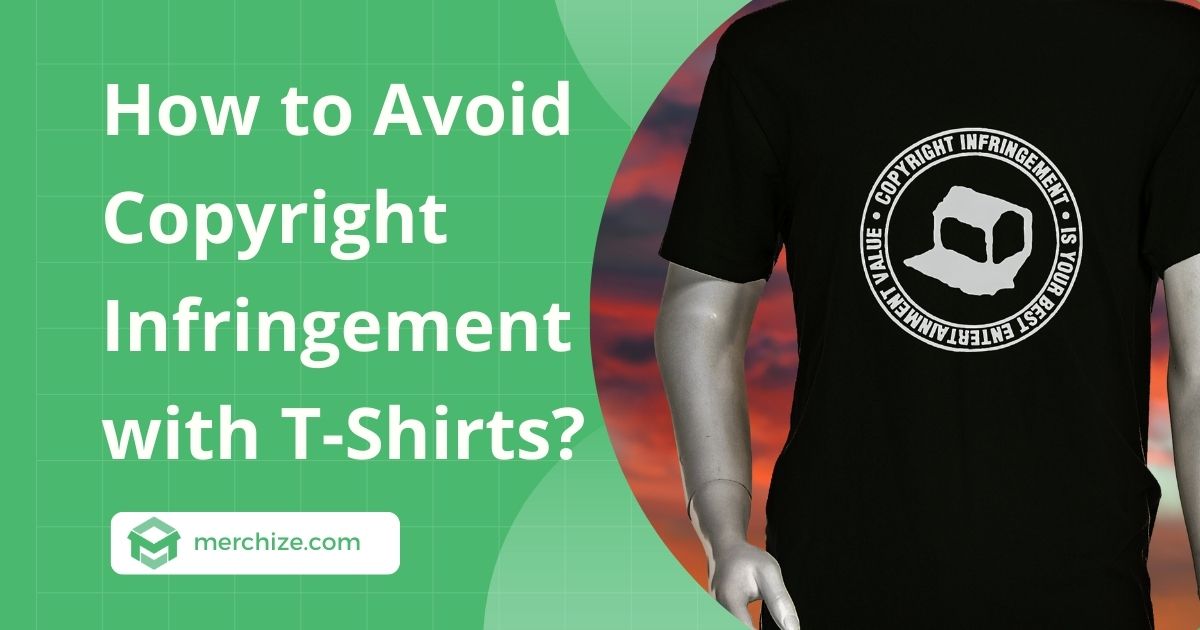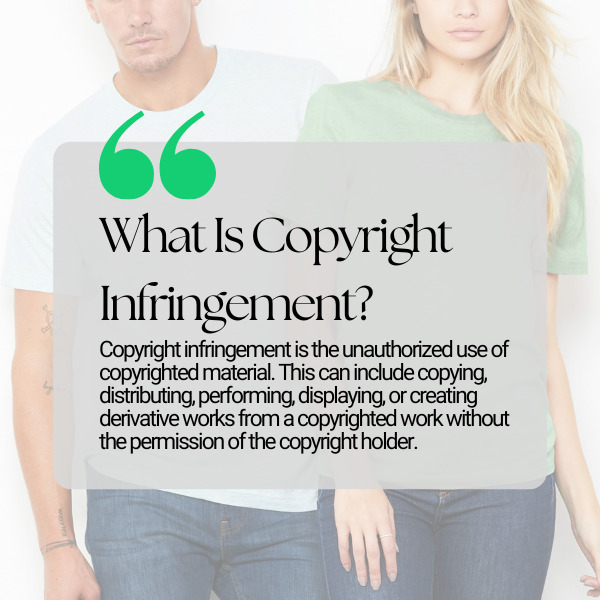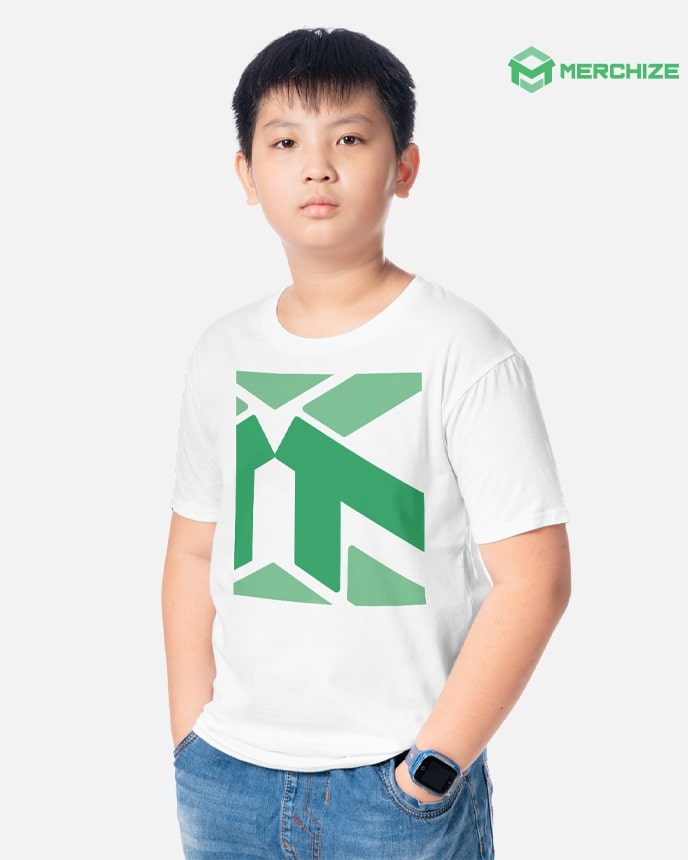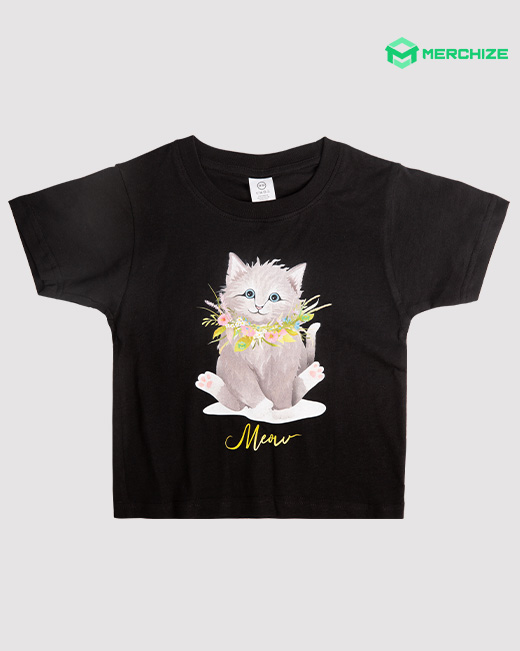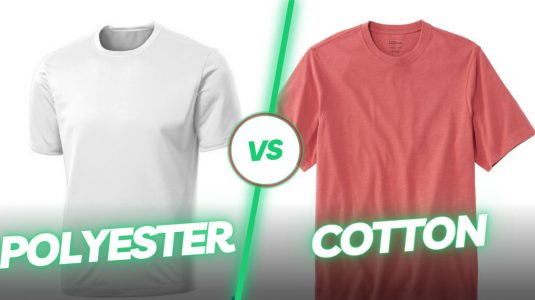Contents
Intellectual property laws can seem complex, especially when creating t-shirt designs for print-on-demand. In today’s digital era where “content is king", understanding copyright principles is crucial for budding fashion entrepreneurs. As the saying goes, it’s not wise to sail in uncharted waters.
So whether you’re dipping your toes into t-shirt design or diving headfirst into building a merch business, safeguarding yourself from infringement claims is vital. I’ll clarify the haziness around what constitutes violation, unpack examples, and share tips to steer clear of murky legal territory. Knowledge is power when trying to profit ethically from creativity.
By grasping key copyright concepts for apparel and leveraging preventative best practices, you can avoid accidental infringement. With insight into what crosses the line plus an actionable game plan, you can confidently create & sell original t-shirt designs without legal penalties slowing you down. Let’s break it all down so you can get back to what matters most – bring your vision to life on super soft cotton!
What is Copyright Infringement?
Copyright infringement occurs when someone uses a creative work protected by copyright without permission from the owner. This includes reproducing, distributing, displaying, or modifying the original material in ways that violate the creator’s exclusive rights.
Essentially, copyright law grants certain intellectual property rights to artists, authors, musicians, and other innovators over their novels, songs, logos, videos, designs, and more. Infringing on these rights by exploiting their work without consent undermines the value of their creation and violates the legal protections owed to them.
Common examples of infringement include:
- Downloading music or movies from illegal pirate sites
- Photocopying chapters from a copyrighted book
- Incorporating recognizable branded cartoons or taglines on merchandise
- Displaying a painter’s work in a public exhibition without permission
The consequences of copyright violation can be serious – ranging from sizable monetary damages to destroyed credibility and even jail time in extreme criminal cases. However, exceptions like fair use do allow using excerpts for limited purposes like commentary without needing explicit approval.
Overall though, every creative entrepreneur should be thoroughly aware of intellectual property laws and ensure full rights are secured before selling products featuring third party content. With insight and caution, dangerous legal pitfalls can be avoided.
The key is simply showing respect and care for other creators’ hard work. More specific apparel-focused guidelines around infringement will be covered next. But first and foremost, ethical design means handling others’ artistic expressions as carefully as you would want yours handled.
For example, selling t-shirts featuring images from a popular movie without licensing the content would constitute infringement. The movie studio holds the copyright to those visuals. By incorporating those designs without consent, you violate the copyright-terms and protections guarding that creative property.
How Does Copyright Infringement Apply to T-Shirts?
When designing t-shirts, copyright law protects original expressions like art, logos, characters, lyrics, and more. Using these legally protected elements on merch requires permissions.
It’s tempting to incorporate recognizable icons that buyers connect with, but doing so without consent equates to intellectual property theft. For example, you cannot legally print t-shirts featuring:
- Mickey Mouse or other Disney characters
- The Nike “Swoosh" logo or slogan like “Just Do It" -Lyrics from chart-topping hits
- Quotes from famous novels like Harry Potter
Essentially, the unique way companies and creators express their ideas is protected intellectual property. Simply having a vague “idea" of a magical boy wizard isn’t ownable – but J.K. Rowling’s Harry Potter series and all associated characters, plotlines, scenes etc. are.
So derivative works building directly upon these legally protected expressions require proper licensing. This applies to both physical and digital concept art. Even if a t-shirt mockup isn’t actually printed, uploading it online still constitutes copyright infringement in most cases.
The only exception is qualifying as “fair use" – like parody designs that sufficiently transform the original rather than just copying. But relying on fair use comes with massive legal risks, so extreme caution is necessitated. Or better yet, just create something completely original from scratch!
Ultimately, showing respect for others’ creations means not exploiting them without consent. Designers should thoughtfully handle iconic cultural touchpoints as carefully as they hope their own emerging icons will be treated someday.
Youth t-shirt with merchize logo
Learn the ins and outs of print on demand copyright with this comprehensive guide. This article covers everything you need to know
How to Avoid Copyright Infringement with T-Shirts?
Looking around the world of t-shirt design can be tricky, especially when dealing with potential copyright issues. Let’s delve into the best practices to become a professional designer while respecting intellectual property rights and minimizing legal troubles.
Understand Copyright Laws Based on Location
To ensure you’re on the right side of the law when selling t-shirt designs, it’s essential to be well-informed about the specific copyright laws of your business location. Copyright laws protect original works of authorship, including artistic creations, from unauthorized use. However, these laws aren’t universal; they can vary significantly depending on where you are.
Why we have copyright rules
Copyright laws are designed to grant the creators of original works special rights to their creations for a specific period. This protection ensures that creators can benefit from their hard work, either through sales or recognition.
Variations Across Countries
Different countries have different rules and durations for copyright protection. While the basic principle remains the same, there can be small differences to be aware of.
For example:
- In the United States, copyright protection generally lasts for the life of the author plus 70 years. The US has a dedicated government website under Title 17 where one can find specific legal rules related to copyrights.
- The UK and Canada have their own sets of copyright laws and durations. It’s crucial to visit ttheir official copyright pages to understand these laws better.
What happens if you break rules
Not abiding by the copyright laws can lead to big troubles, from lawsuits to hefty fines. The severity of the offense can be contingent upon factors like intent, the extent of copied material, and the money lost caused to the original creator.
Research is Key
If you’re starting a t-shirt printing business, you need to be proactive. Invest some time in researching copyright laws for your specific location. Get the lowdown on the rules, the exceptions, and don’t hesitate to get some legal advice. Doing this not only keeps your business safe but also respects the hard work and creativity of other artists.
Create Original Designs
In the bustling world of t-shirt businesses, standing out is key. Creating your own designs not only keeps you outta legal trouble but also lets you carve out your own space in the market. So here’s how to get your creative juices flowing:
- Start with Inspiration: Instead of copying existing designs, draw inspiration from various sources. Nature, TV shows, your own life storie, or even abstract concepts can spark some killer design ideas.
- Sketch and Iterate: Begin with rough sketches and don’t be afraid to change ’em up again. This iterative process will help evolve your initial idea into a polished design.
- Use Design Software: Leverage professional software like Adobe Illustrator or CorelDRAW. They offer tools that can transform basic sketches into print-ready awesomeness.
- Stay Updated: Trends change, and so should your designs. Keeping a pulse on what’s popular can help you create designs that resonate with current tastes, ensuring your designs will always hit the mark and be in vogue..
- Collaborate: Think about joining forces with local artists or graphic designers. They can bring new flavors to your design mix, making your tees even more rad.
Create custom print on demand t shirt for with cute cat
Use Public Domain Resources
Another safe avenue for design is using materials from the public domain, which includes works whose copyright has expired or never had copyright. Resources like Pixabay, Wikipedia Commons, and Public Domain Pictures offer vast libraries of public domain materials, from images to quotes and slogans.
Consider Royalty-Free Images
Royalty-free images are not necessarily free of charge, contrary to what the term might imply. Instead, royalty-free refers to a type of license that allows you to pay once to use the imageuse it loads, within the terms of the license. However, the original creator retains the copyright, and you are essentially getting permission to use the image, not the copyright to the image itself.
There are many platforms provide royalty-free images, some of which are:
- Shutterstock
- Getty Images
- Unsplash (offers images that are free to use)
- Pixabay
Before downloading and using any image, read the license terms carefully. Some licenses might restrict commercial use or need a shout-out.
Obtain Permission for Copyrighted Material
If you’re keen on a specific copyrighted design, the ethical and legal approach is to obtain explicit permission from the copyright holder. Licensing agreements can be formalized to specify terms, fees, and the duration for which you can use the copyrighted material. These agreements should be detailed and signed by both parties to avoid future disputes.
Be Mindful of Non-Human Generated Art
The legal landscape around the copyright status of non-human generated art—be it a monkey’s selfie or AI-created artwork—is still evolving and subject to debate. Even law schools and legal geeks can’t agree if these belong to everyone or if someone has rights over them. Given the uncertain legal footing, exercise caution if you plan to commercialize art created by non-humans. Until there are clearer guidelines or legislation, using such works could expose you to unforeseen legal risks. It’s advisable to consult with a legal expert to navigate this gray area.
Utilize Non-Copyrighted Elements
Before you add any design stuff to your T-shirt project, you gotta make sure you don’t break any copyright rules. Here are some new tips:
- Look for Copyright marks: The “circle C" (©) is a usual sign, but not every copyrighted thing has it. Don’t assume no sign means it’s free to use.
- Examine for Watermarks and Ownership Notes: These can be copyright notices or just notes saying someone owns it. These are obvious clues that you can’t use it freely.
- Utilize Reverse Image Search: Tools like Google’s reverse image search can help identify the origins of an image or design, making it easier to determine its copyright status.
- Contact the Copyright Holder: If you find a design you like but aren’t sure if it’s copyrighted, ask them! Getting an OK means you’re good to go.
- Consult Legal Sources and Databases: Websites like Creative Commons or the U.S. Copyright Office provide valuable resources to check the licensing of various materials.
- Consider Professional Legal Consultation: If still in doubt, professional legal consultation can help you navigate the complexities of copyright law, offering personalized advice for your specific project.
In summary, the keys to avoiding copyright infringement in the t-shirt design industry are education, due diligence, and ethical practices. From creating your designs from the start to legal verification of materials, each step is crucial in building a clear and successful t-shirt business.
By sticking to these guidelines, you not only protect yourself but also respect the effort and creativity of other artists and creators.
